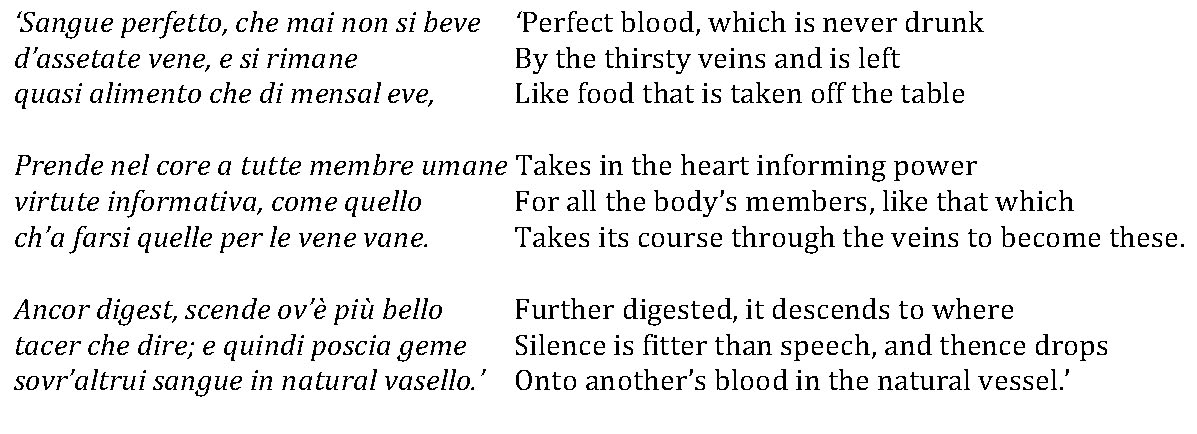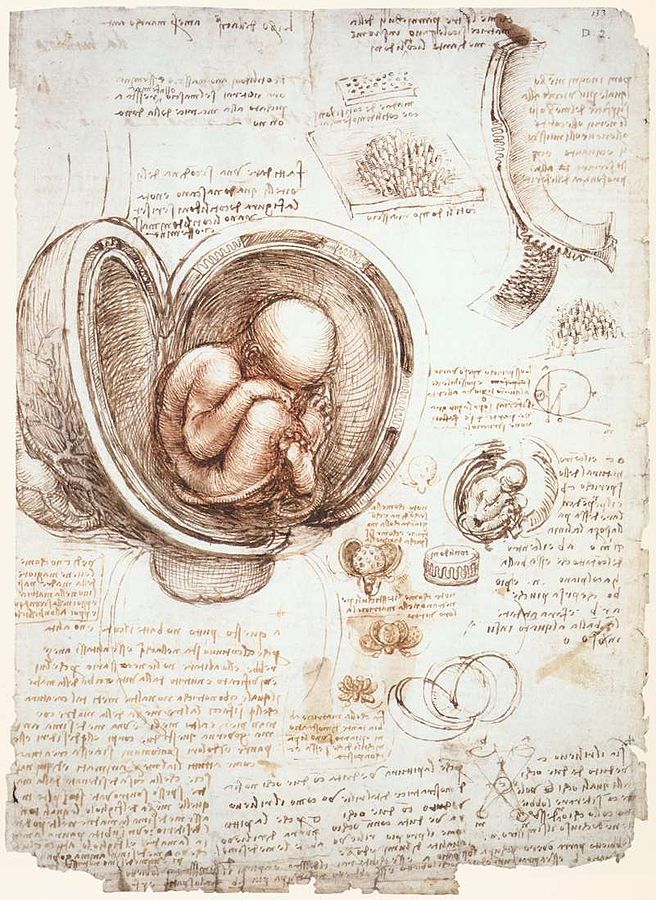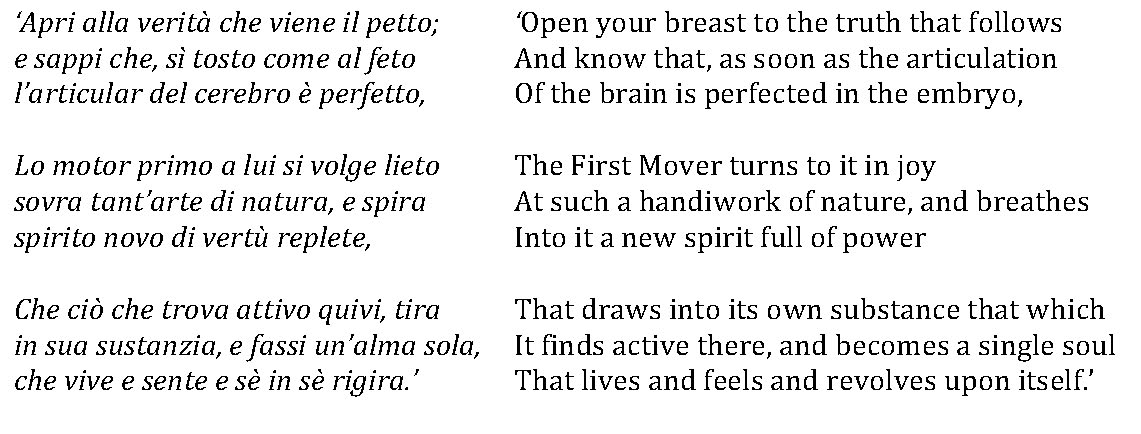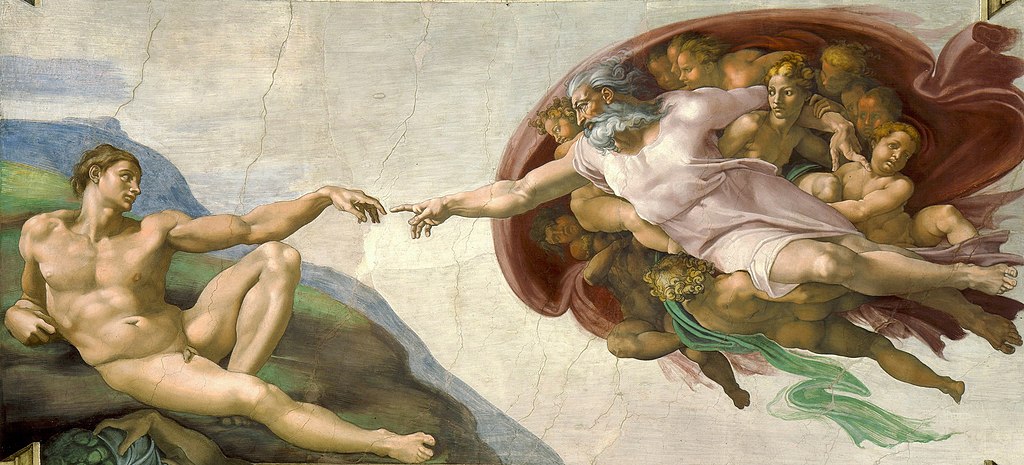
Bird similes abound throughout the Comedy. I find this one, in which Dante compares himself to a fledgling stork, delightful:

Ostensibly, Dante is making a play for our sympathy here by presenting himself as young and eager for knowledge yet hesitant to ask a question, doubtless out of reverence for the older and wiser Virgil. But I think his timidity may have more to do with the subject matter. We’re on the terrace of the lustful, so conversation with the shades here might turn to… um, sex. Perhaps 13th century Tuscans were as embarrassed to talk about the facts of life as the average British parent is today. I also suspect Dante is having a sly bit of fun here: storks are universally depicted as bringing babies, an association that goes back to Ancient Greece and was prevalent in mediaeval Europe. So he is hinting that babies and how you make them are about to come up. Like, “Skip this canto, dear reader, if you’re feeling prudish”.
What Dante actually asks, when it is dragged out of him by Virgil, is a rather trivial question: how can it be that shades can grow skinny when, being immaterial, they don’t actually need any food anyway? Maybe it’s a feint, a fake question designed to distract Virgil from what’s really on his mind. At any rate, Virgil ducks it by handing it over to Statius, a fellow Latin poet they ran into a while back and who accompanies them on this part of the climb. Because he’s a Christian, Statius is supposed to know stuff that Virgil doesn’t.
Statius seems to understand intuitively what Dante is really asking about, as he leaps very matter-of-factly into a description of how semen is formed and what happens to it when a man and a woman have sex:

Note the coy circumlocutions for “pinus” and “womb”. Is this merely the language of poetry, which is for ever calling things by other than their real names? After all, Dante’s not writing a textbook or a manual. Or is the poet’s modesty a sop to the supposed sensitivities of his readers?
Anyway, Statius continues, from this mingling of “perfect blood” in the womb, the embryo starts to form. It is at first vegetative, like a plant, then animal, moving and feeling, like a sea-fungus, then starts to develop bodily organs. This is the standard teaching of Aristotle, as relayed by Aquinas and endorsed by the medieval Catholic Church. It strikes me as a pretty accurate account, even though modern science and technology have greatly added to our knowledge.

Now comes the tricky bit. How does the soul cross the gap from the animal to the human? Other wise people, notably the Arab philosopher Averroes, have erred on this point, Statius says, so he is keen that Dante should pay attention:

The main point here, as Sinclair says, is that the human soul is no mere product or accompaniment of the body, but the direct and immediate creation of God. Make what you will of this doctrine in terms of its truth content (scientists continue to debate the nature of “emergent phenomena” and whether or not consciousness is among them), but it has certainly inspired some great art, not least that of Michelangelo, painting some 200 years after Dante wrote. The origin on which both draw is of course biblical: ‘The Lord God breathed into his nostrils the breath of life, and man became a living soul.” (Genesis 2.7). Note that the Italian word for spirit, spirito, means “that which is breathed”, a connection we lose in English.
So there you have it! In Sinclair’s words, “the wonder of physical generation, then the greater wonder of the ‘new spirit’ breathed into the embryo by the First Mover, the renewal in each human creature of the first creation”.
The scholastic argument may be dry as old bones, but the vigour of Dante’s language conveys the miracle of consciousness in a way that can still awaken a sense of mystery. It is, to use that tired old word rightly for once, awesome.
Genius lines:
(1) Apri alla verità che viene il petto. Receptivity to new knowledge is a recurrent theme throughout the Comedy. Here Dante is encouraged to open himself up, perhaps in readiness for the transformation he will undergo under Beatrice’s tuition in Paradiso.
(2) Lo motor primo a lui si volge lieto. Dante emphasizes the Creator’s joy in creating, a joy that is reciprocated by the creature and can still light us up as we read such lines. Compare Purgatorio 16, lines 85 to 90, discussed in Note 2.





